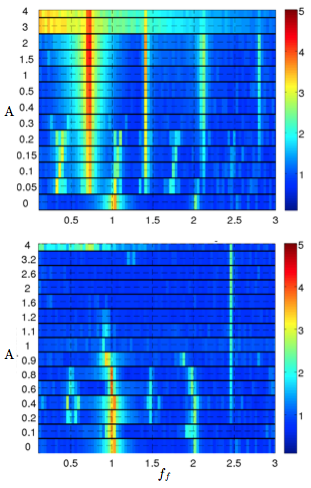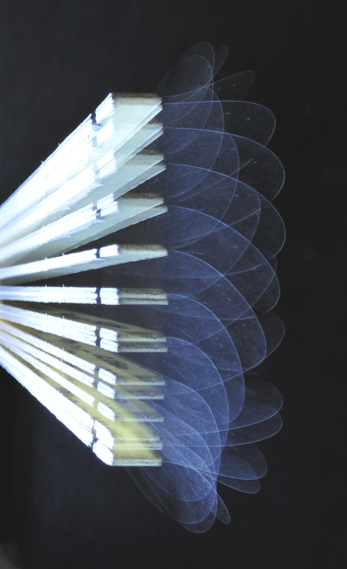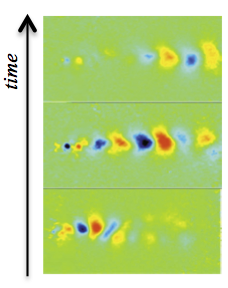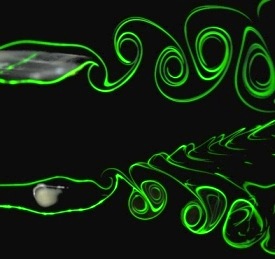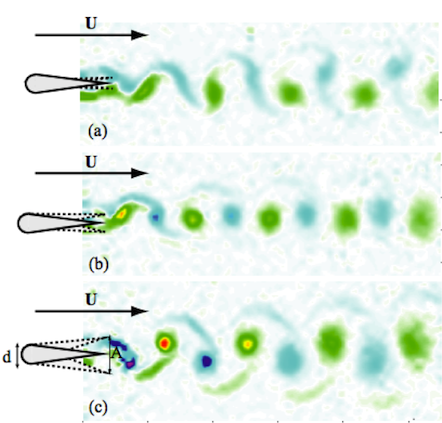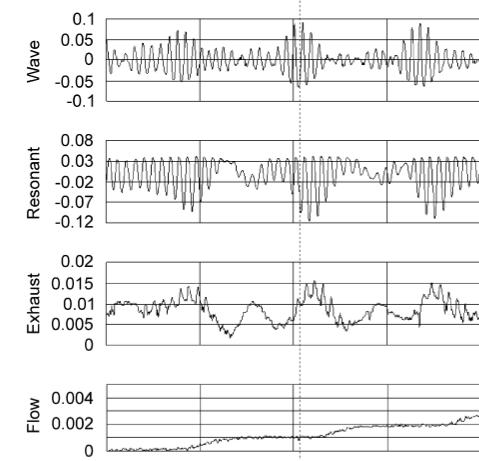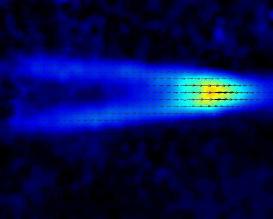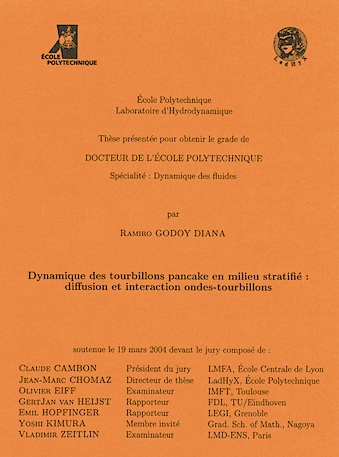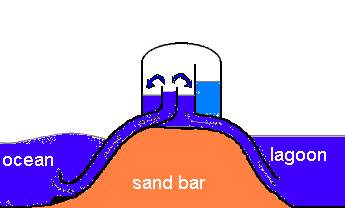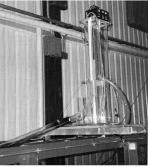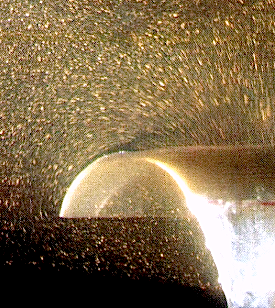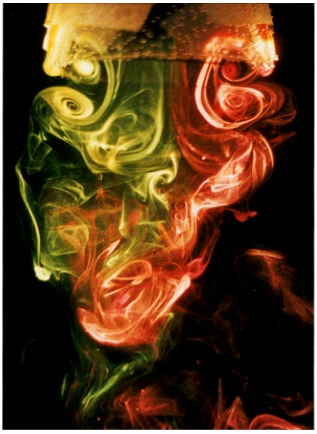PhD defense on January 14th, 2011 at Amphi Langevin, ESPCI
Dynamique tourbillonnaire dans le sillage d’un aileron oscillant: Propulsion par ailes battantes biomimétiques
Catherine Marais
https://pastel.archives-ouvertes.fr/pastel-00584901

Abstract
This thesis deals with the fundamental mechanisms implied in flapping based propulsion systems. We use a simplified model, which consists of a flapping foil, placed in a hydrodynamic tunnel. This set up allows us to establish a framework for the analyse of wakes produced. Particularly, we are interested with the influence of the foil flexibility on these wakes. We define a 2D phase space (frequency and amplitude of the flapping), in which we identify three main flow regimes, associated with three vortices wake type. The PIV technique allows us to precisely analyse and quantify the physical and geometrical parameters of the observed wakes. The mean force is estimated for each regime, using a standard momentum balance. We localise then the drag-propulsion transition in our phase space. We show that the propulsive performance of flexible foils is superior to that of the rigid foil, and we suggest some explanations to explain this result.
Jury
Olivier Doaré (Examinateur) ENSTA, Palaiseau
Marie Farge (Examinatrice) ENS, Paris
Stéphane Popinet (Rapporteur) NIWA, New Zealand
Lionel Schouveiler (Rapporteur) IRPHE, Marseille
José Eduardo Wesfreid (Directeur de thèse) PMMH, Paris
Ramiro Godoy-Diana (Co-Directeur de thèse) PMMH, Paris
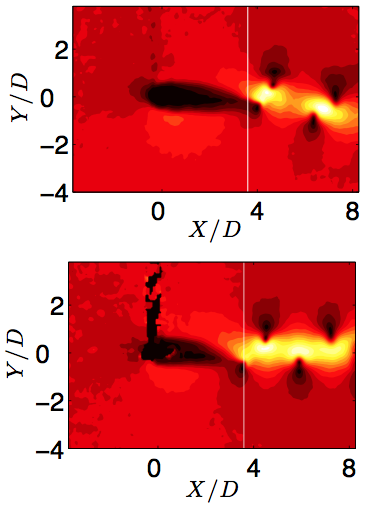 Stabilizing effect of flexibility in the wake of a flapping foil
Stabilizing effect of flexibility in the wake of a flapping foil